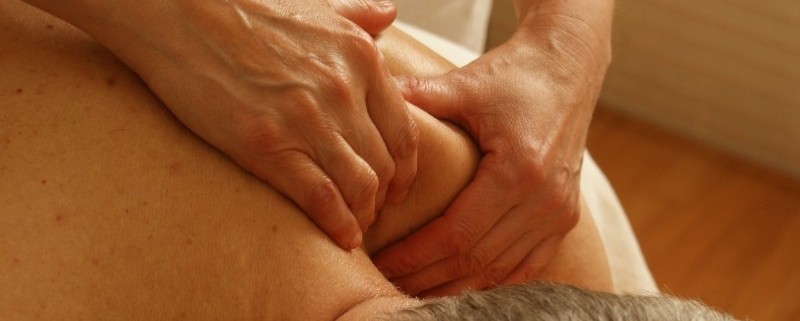Massage’s Effectiveness and Shoulder ROM
Researcher Young-Ran Yeun (2017) recently released a systematic review with a meta-analysis regarding research studies and shoulder ROM (or range of motion) treatment via massage therapy. Shoulder pain is a common condition across the globe: modern day work stations and other factors can contribute to this familiar ailment (Typical trigger points around the shoulder are: the rotator cuff, latissimus dorsi, teres major, deltoids, and pectoral muscle). Shoulder pain can be chronic and disabling, with severe pain easily limiting a person’s ROM. It is important that treatment of shoulder pain be undertaken as soon as possible, so as to avoid an escalation of pain and/or damage.
Researcher Yeun began his research by looking for appropriate studies for his review. He included studies where shoulder flexion, extension, abduction, internal rotation, and external rotation were measured. After combing through hundreds of studies with certain criteria in mind, the end result found seven studies that could be applied to the review.
Overall, Yeun could conclude that the studies supported the idea that massage therapy is effective at improving shoulder ROM, especially in terms of flexion and abduction.
Sports massage appeared to have the most significant effect. The studies primarily focused on soft-tissue massage using effleurage, petrissage, and friction. These techniques can help with smoothening scar tissue and can loosen deep adhesion in ligaments and tendons.
Another important discovery was that three of the seven studies had participants with a mean age of 60 or over. This research could indicate that massage therapy is especially significant for the elderly. With the physiological aging of the body, including the musculoskeletal system and joint, pain can become more frequent and common. An increase of pain may in turn lead to a decrease in physical movement, which might exacerbate pains further, thereby decreasing a person’s quality of life. Massage therapy might prove an effective complementary treatment for elderly individuals undergoing such disorders.
With massage being a commonly used treatment for shoulder pain and ROM improvement, it is important that the appropriate evidence exists to support its efficacy. Further studies will be needed to truly cement massage therapy’s effectiveness, but this review/meta-analysis seems to indicate that massage is an effective therapy method for improving shoulder ROM, especially flexion and abduction.
Reference:
Yeun, Y. (2017). Effectiveness of massage therapy on the range of motion of the shoulder: a systematic review and meta-analysis. Journal of Physical Therapy Science, 29(2), 365-369. doi:10.1589/jpts.29.365


Follow Us!